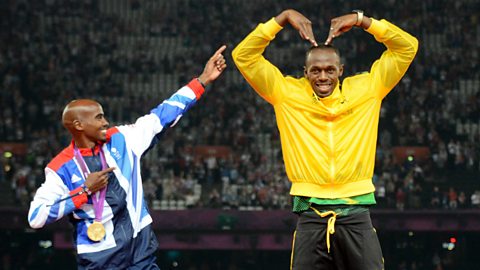Definitions and descriptions of the principles of training
The principles of training should be thought of as the 'golden rules' of making fitnessThe ability to meet the demands of the environment. training work for the individual participant. Following these golden rules will help to guarantee success and will carry athletes towards their training and performance goals. All training is aimed at creating long-term physical changes in the body systems. These changes are referred to as adaptationA feature of an organism's body which helps it to survive..
An athlete demonstrates the different regimes she follows to keep fit
Specificity - training must be relevant to the individual and their sport. This can be achieved by tailoring training specifically for the sport or even the position that the individual plays, the muscle groups that they use the most or the dominant energy system of the athlete. For example, a 100 m sprinter is likely to train very differently to a 10 km racer despite them both being track athletes. The sprinter will focus on speed and power while the distance runner will train for cardiovascular fitness and the ability to work at high intensity aerobically.

Progressive overload - training frequency, intensity, time or type (FITT ā see below) must be increased over the training period to ensure that the body is pushed beyond its normal rhythm. Increases must be gradual so that the athlete avoids a plateau in performance or, worse, injury.
FITT - (Frequency, Intensity, Time, Type) - Frequency is increased by training a greater number of times each week. Intensity is increased by lifting a greater resistance, such as with weight training, or by training at a higher percentage of maximum heart rate (maxHR). This can be done either as continuous or interval training. Time can be manipulated by training for longer, reducing recovery times or by completing a greater number of sets or repetitions (also known as reps). Type of training is manipulated by offering a variety of training types and experiences to the athlete by combining training methods.
Individual needs - all athletes are different. Training must be related to the athlete's age and genderCharacteristics of masculinity and femininity that vary from society to society and over time. In biology, often used to describe someone's assigned sex at birth. A person's biological sex and gender identity are not always the same., their injury status and fitness level. Any training that fails to be relevant to the individual will fail to motivate the athlete and will prove to be unsuccessful in the long term.
Rest and recovery - physical adaptations occur during the recovery and non-active period of the training cycle. Therefore athletes and trainers must achieve the right amount of rest between sessions, good sleep patterns and the right nutrition, including the use of proteinOrganic compound made up of amino acid molecules. One of the three main food groups, proteins are needed by the body for cell growth and repair., to help repair the damage caused by intense training.
Reversibility - systems reverse or de-adapt if training stops or is significantly reduced or injury prevents training from taking place. It is essential to avoid breaks in training and to maintain the motivateTo raise the level of determination to succeed. of the athlete.
Overtraining - if an athlete does not have sufficient rest periods then they are at risk of overtraining. This is when the body does not have time to adapt to the training and as a result the fitness of the athlete declines and they are more at risk of becoming ill or injured.